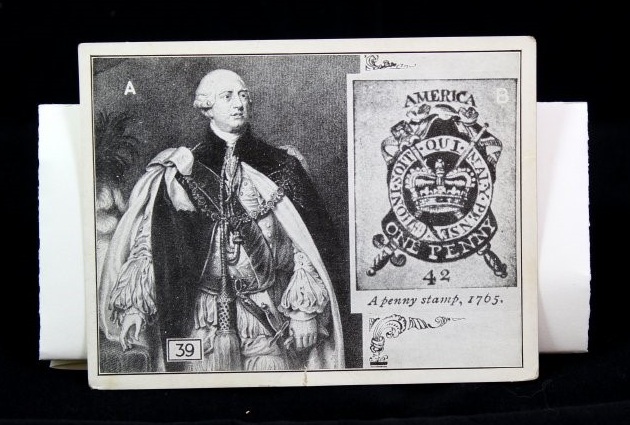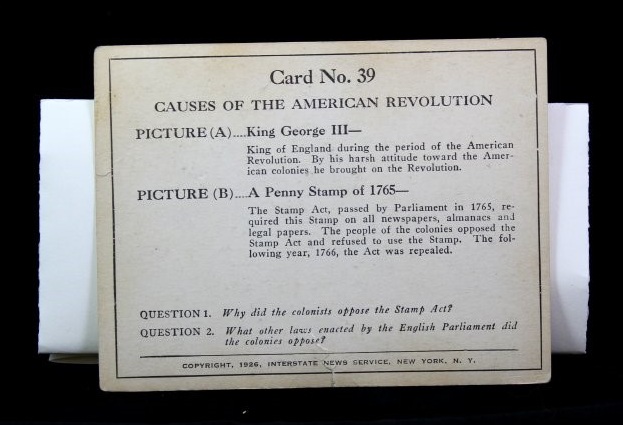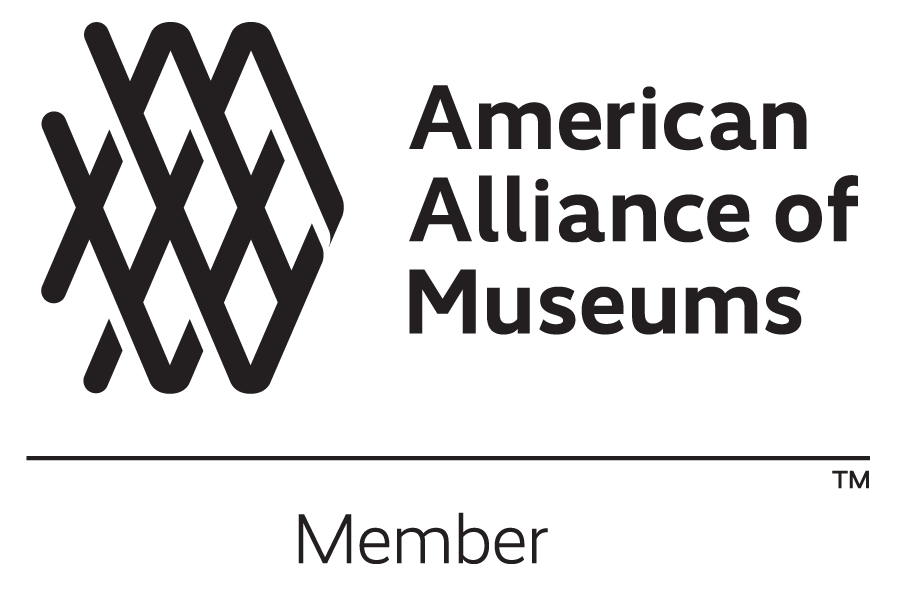Causes of the American Revolution from Interstate News Service History Cards, 1926
by Lisa Goulet, Collections Manager
Commercial photolithograph, 3 9/16 x 4 3/4 in.
Fraunces Tavern Museum, TR2019.01.026. Gift of Kent D. and Tina K. Worley.
Commercial photolithograph, 3 9/16 x 4 3/4 in.
Fraunces Tavern Museum, TR2019.01.026. Gift of Kent D. and Tina K. Worley.
This card is part of a set of 120 used as an educational game that told a “Complete Pictorial History of the United States” from European contact to the mid-1920s, when the set was published. It outlines notable milestones through US history: including major actors, events, inventions, and discoveries. This set was intended to be used by primary school students and offers a more engaging way to learn history than the rote memorization of facts and dates.
This is a product of the adoption of new theories about child development and education during the Progressive Era. In particular, the theory of progressive education, which proposed new methods of learning that broke away from the narrow and formal methods traditional schooling through creative and active exercises, was conceived as a way of educating the “whole child”. Experimental schools were established as radical spaces that rethought how education was conducted, but by the early decades of the twentieth century, many of these principles were adopted by educators in public school systems.
Because this set also tells history from a very specific and simplified perspective, it is perhaps also indicative of the emergence of public schooling in the United States as a social tool for Americanizing communities that were seen as ‘outsiders’ to mainstream culture. These included newly-landed immigrants such as southern and eastern Europeans, people of color, women, indigenous peoples, and non-Protestant communities.
The methods popularized by this time in educational history we now see as familiar ways of learning: activity programs, creative writing, reading, and drama classes, projects based on real community issues, flexible learning spaces, and programs for the development of citizenship and responsibility.
This piece gives us an example of not only how American history was taught during the early twentieth century, but also reveals the priorities of education at the time as well.
Commercial photolithograph, 3 9/16 x 4 3/4 in.
Fraunces Tavern Museum, TR2019.01.026. Gift of Kent D. and Tina K. Worley.







